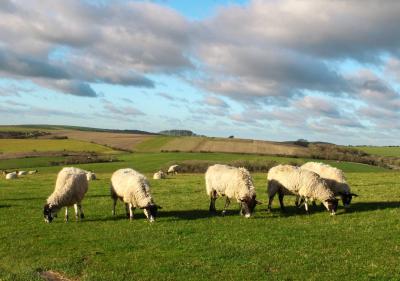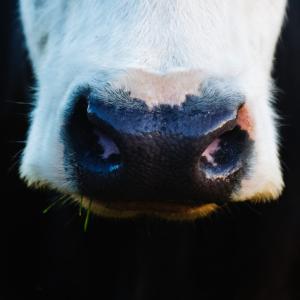
By vet Anne Abbs
Tapeworms are flat, segmented worms that have a different life cycle to the roundworms that normally cause PGE in cattle and sheep. The adult worms live in the intestine and have a head with hooks that attach to the gut wall with a body in the gut lumen composed of segments. The segments contain eggs and are continually breaking off and being passed in the faeces. Occasionally a strip of segments breaks off and is visible as a white ribbon on the muck, sometimes moving immediately after it is passed, seen particularly in lambs. In the UK the main species of tapeworm is Moniezia expansa.
Unlike roundworms, tapeworm eggs are not immediately infectious to other sheep or cattle and, similar to fluke, must go through an intermediate host – in this case an orbatid mite that lives on grass. The mite picks up the eggs and develops cysts within its tissues that can then develop into the adult worm. In order to become infected sheep or cattle must then eat the intermediate host picked up whilst they are grazing. Mites do not survive on the grass blades during very cold weather and further infections are not picked up after the first heavy frost.

Infection is generally asymptomatic and lambs can carry a heavy burden without any apparent effect on health or growth. During the dressing process in the abattoir sheep intestines are generally stripped to remove their contents and large numbers of tapeworms are regularly expressed from the gut in lambs that appear to have reached slaughter weight with no issues. Occasionally however the numbers can be great enough to cause condition loss, diarrhoea and, in extreme circumstances, intestinal obstruction.
If treatment is considered necessary it is worth bearing in mind that not all wormers treat tapeworm. White wormers containing Albendazole, Oxfendazole, fenbenazole or Ricobendazole are generally the most effective.

The other types of tapeworm that affect cattle and sheep are ones where they are the intermediate host i.e. the adult tapeworm is in another species (usually dog or fox) and the cattle or sheep eat the eggs shed in faeces and develop cysts in their muscles. The parasite is then relying on a dog to eat raw or undercooked meat to complete the life cycle. This is uncommon as most dogs are fed commercially produced food which is well cooked but may become more common with a rise in owners feeding their pets a raw diet. Meat infected with tapeworm cysts is condemned in the abattoir, both because it is unaesthetic and also to reduce the risk of dogs becoming infected.
Unfortunately it is impossible to determine the presence of cysts in the live animal and there is no treatment available, although the cysts degrade over time. If you do get a report of condemnation or trimming for tapeworm cysts from the abattoir it is therefore worth considering holding back lambs from the same group to allow cysts in other animals to degrade and worming the farm dogs if this has not been done recently.